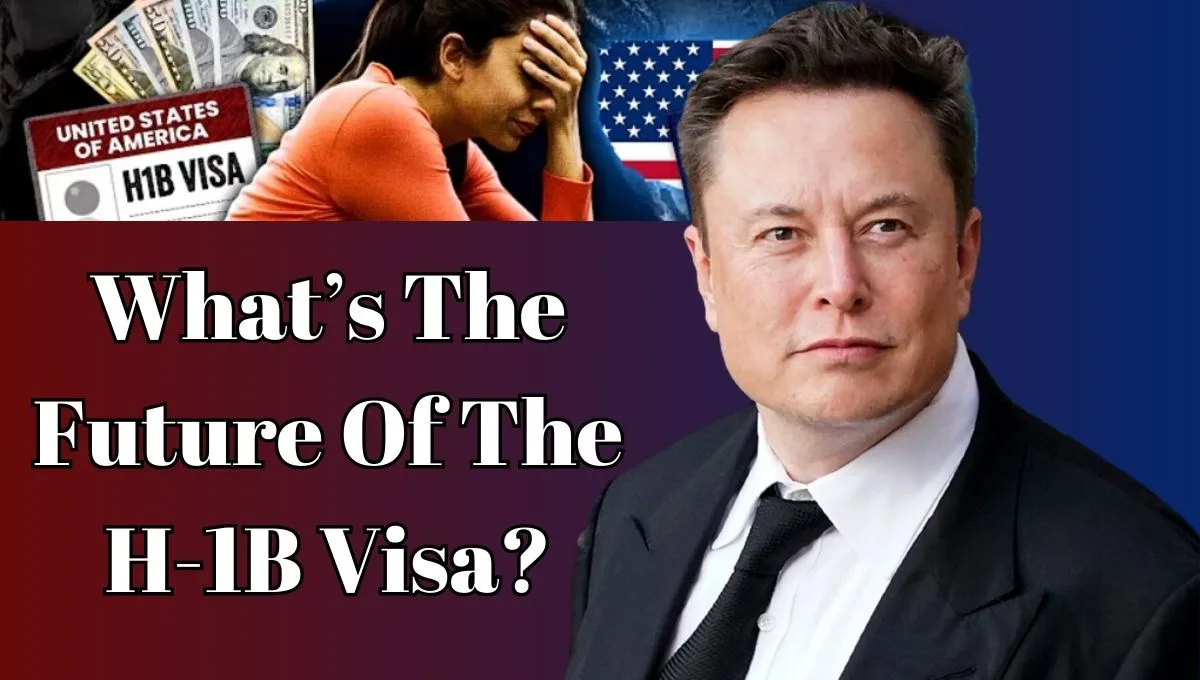What’s The Future Of The H-1B Visa? Elon Musk, who is in charge of the Department of Government Efficiency (DOGE) in the new Donald Trump administration, has firmly backed the most popular H-1B visa program for highly qualified professionals.
Musk claimed that tech firms like Tesla and SpaceX require foreign labor, and he criticized a user on X who was talking about SpaceX procedures. Musk wrote on X, “H1B is the reason I’m in America with so many important people who built SpaceX, Tesla, and hundreds of other companies that made America strong.”
Trump has also endorsed Musk, saying he “always liked the visas” in an interview with the New York Post. “My properties are home to numerous H-1B visas. I have been a supporter of H-1B.
Having said that, what was the impact on the US economy and the approval rate of the visa program during Trump’s first term? Let’s find out.
performance of H-1B during Trump 1.0
Official documents from the US government show that the number of H-1B recipients admitted to the US increased from 570,368 in the fiscal year 2018 to 601,594 in the fiscal year 2019. In the fiscal year 2020, however, the figure dropped to 368,440.
Trump’s restrictions on nonimmigrant work visa holders, including those with the H-1B, ended in March 2021, and the Joe Biden administration chose not to extend them.
However, according to US official records, admissions in H-1B status continued to decline, reaching a low of 148,603 in the fiscal year 2021, largely as a result of the ongoing effects of the Covid-19 pandemic.
In 2022 and 2023, the number of entrants rose to 4.10 lakh and 7.55 lakh, respectively.
Indians made up 72.3 percent of all H-1B visa holders in fiscal year 2023, continuing the long-standing pattern of Indian nationals predominating in this category. On the other hand, according to a Mint report, Chinese applicants made up just 11.7 percent of approvals.
In addition to approval, Trump’s first term saw a significant increase in the rate of denial. Between 2016 and 2018, the rate rose from 6% to 24%. Stricter scrutiny and a more difficult application process were blamed for this increase. According to data from the US Department of State, the denial rate decreased once more to 21% in 2019, 13% in 2020, and 4% in 2021.
Nonetheless, the denial rate dropped dramatically to just 2% by 2022, suggesting a return to more favorable results for H-1B visa applicants.
What Does Trump 2.0 Hold for H-1B?
In one of his posts on X, Musk had argued for the expansion of the visa program. “Anyone who is honest, hardworking, and loves America should be allowed to immigrate legally,” he wrote. “All of these individuals are valuable to the nation. However, it’s crazy that so many people who we don’t know are coming here illegally.
Musk would presumably be able to reduce regulations that limit his own business ventures, even if they are under H-1B, given his billion-dollar contracts with the US government and his new role at DOGE.
What is the H-1B Visa New Rules, and how can you get it easily? US Visa | Indians H-1B
US Announces January 9 As National Day Of Mourning For Jimmy Carter
In an interview with CNBCTV18, former US Ambassador to India Kenneth Juster stated that he does not anticipate any “precipitous changes” to the Green Card or H-1B visa programs under the incoming administration.
The visa program has been criticized by some of Trump’s most outspoken and ardent MAGA supporters, who see it as incompatible with the anti-immigration and “America First” philosophies that the president-elect used to win over voters. Additionally, some critics contend that the US government obstructs the advancement of American workers and college graduates, including minorities, by importing foreign workers.
During his “War Room” podcast, Steve Bannon, a member of the first Trump administration, called H-1B visas a “scam” run by Silicon Valley oligarchs who want to “take American jobs and bring over what essentially become indentured servants at lower wages.”
An expert on the H-1B visa program
In 1990, skilled workers were granted H-1B visas. Although they can be extended for up to six years, they are normally granted for three years.
Since 2004, only 85,000 new H-1B visas are granted annually, with 20,000 of those being allocated to international students who have earned a master’s degree or above from US universities. Universities, think tanks, and other non-profit research organizations are exempt from that cap, though. As a result, more H-1B visas are granted.
What is the H-1B Visa New Rules, and how can you get it easily? US Visa | Indians H-1B
US H-1B Visa Reforms: salary-based selection instead of lottery!
Extensions for individuals who are currently employed in the US are also authorized by the government.
The great majority of candidates who are accepted are employed in engineering, mathematics, science, and technology. 65 percent of them work in computer-related fields in the fiscal year 2023. Architecture, engineering, and surveying came next; roughly 10% of those authorized in 2023 were employed in these fields.

